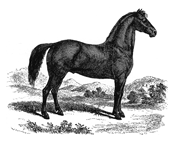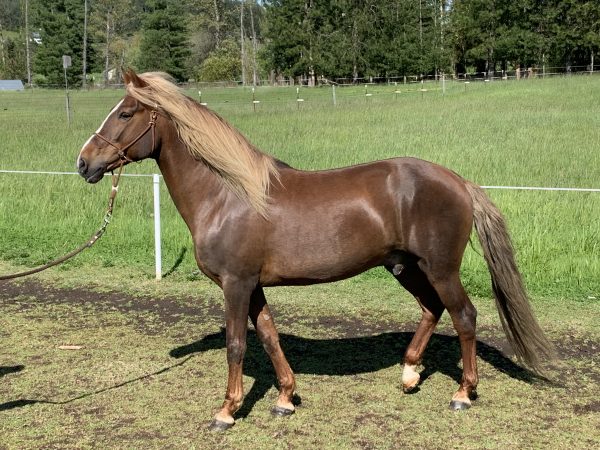
Breed Facts
Status:
Threatened
Use:
Gaited Riding
Adult Weight:
700-1100 lbs.
Adult Height:
13-15.2 Hands
Temperament:
Enjoys human contact, is friendly, spirited, and responsive
Experience Level:
Novice-Intermediate
Notes:
This horse may be small, but it is the “Cadillac” of riding horses, with a smooth-as-silk gait that is perfect for those with physical limitations.
Puerto Rican Paso Fino Horse
Ancestors of the Puerto Rican Paso Fino horse were first brought to the island of Puerto Rico by Columbus, with later introductions by Juan Ponce de León. Several Iberian types of horses from the period, including the sturdy, smooth-gaited Spanish jennet and horses from Andalusia and north Africa, contributed to the modern Puerto Rican Paso Fino. Hundreds of years of breeding and selection resulted in the fine saddle horse breed we know today.
The Puerto Rican Paso Fino is valued for its 4-beat gait in which the hooves strike the ground in a quick 1-2-3-4 movement, resulting in the paso fino (or “fine step”) that characterizes the breed. This smooth lateral gait produces a comfortable ride. Horses can be a variety of colors, with and without markings. They range in size from 13-15 hands. Puerto Rican Paso Finos are highly versatile, sure-footed, intelligent, and hardy. They make excellent saddle horses, enjoy interacting with humans, and excel in many equestrian disciplines. A unique eye color, called “tiger eye,” is an autosomal recessive genetic trait that is found only in this breed. The gene produces an unusual yellow, amber or orange colored iris. Despite their many desirable qualities, fewer than 500 Puerto Rican Paso Fino horses are registered in the United States and fewer than 2,500 can be found globally.
Recognizing the importance of preserving the breed’s purity and numbers, a registry was formed in Puerto Rico in 1943 that is regulated by the Puerto Rico Department of Agriculture. In 1987, the Pure Puerto Rican Paso Fino Federation of America, Inc. was incorporated to preserve, protect, and promote the breed on the U.S. mainland. This organization developed a shared online registry system so that island and mainland breeders can now track purebred horses and access pedigree information to make informed conservation breeding decisions.
Did you know:
History shapes breed identity and purpose. It also helps inform heritage breed conservation. The Livestock Conservancy documents these histories for each livestock and poultry breed we work with. Love History? Join today at Membership & Subscribers – The Livestock Conservancy for as little as $4 monthly.

